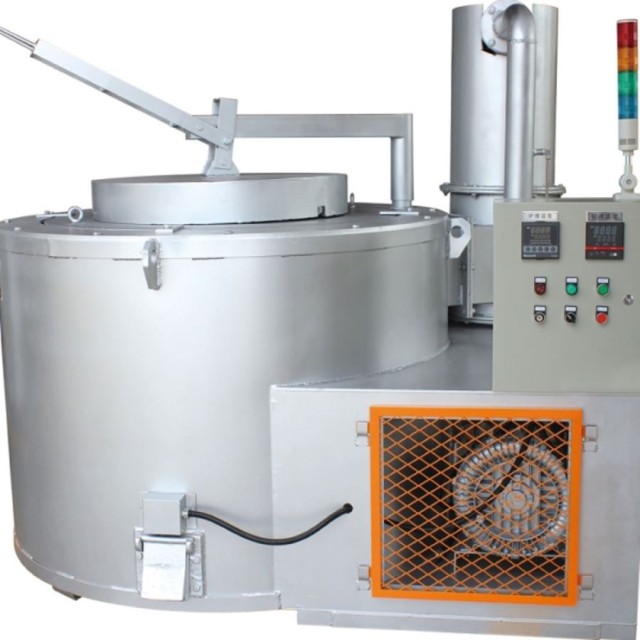Electric Arc Furnaces
Features of Electric Arc Furnaces
Electric arc furnaces (EAFs) are renowned for their exceptional energy efficiency, particularly when processing scrap metal. These furnaces are versatile, capable of handling a wide array of waste materials, from small metal fragments to larger, more complex pieces. This adaptability makes them a cornerstone in the recycling industry, where the goal is to transform discarded materials into valuable resources.
One of the standout features of EAFs is their ability to achieve and maintain extremely high temperatures. Industrial-grade EAFs can reach temperatures up to 1,800 °C (3,272 °F), while laboratory units can surpass 3,000 °C (5,432 °F). This extreme heat is crucial for melting not just ordinary steel but also high-quality and specialty steels that contain refractory elements like tungsten (W) and molybdenum (Mo). The intense heat generated by the electric arcs ensures that these elements are uniformly distributed throughout the molten metal, resulting in a homogenous final product.
In addition to their high temperature capabilities, EAFs are designed with environmental considerations in mind. They are engineered to minimize emissions, making them a more sustainable option compared to traditional furnaces. The arc furnace's design allows for the effective removal of toxic gases and inclusions during the deoxidation and desulfurization processes, further enhancing the environmental benefits.
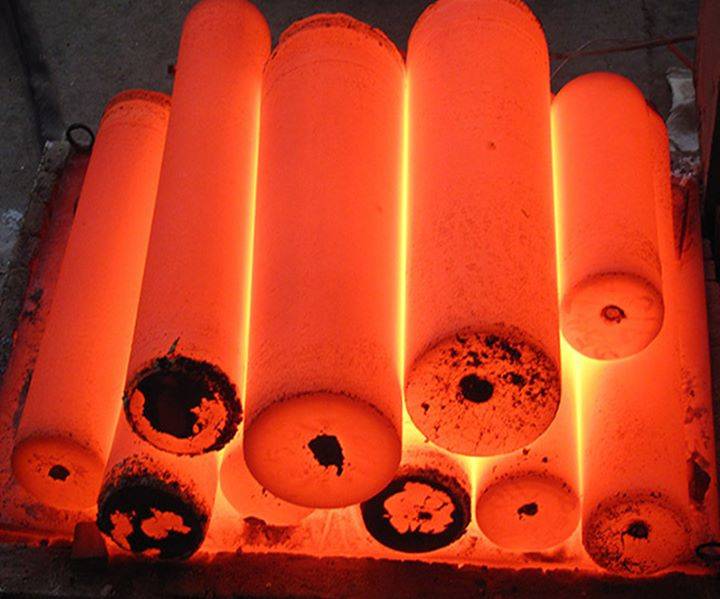
Another significant advantage of EAFs is their high flexibility. These furnaces can be operated continuously or intermittently, depending on production needs. This flexibility is particularly valuable in industries where production schedules can vary, allowing for greater operational efficiency and cost savings. The ability to quickly switch between different types of steel production without significant downtime is a key factor in their widespread adoption.
| Feature | Description |
|---|---|
| Energy Efficiency | Highly efficient in energy consumption, especially when recycling scrap. |
| Temperature Range | Can reach temperatures up to 1,800 °C (3,272 °F) in industrial settings. |
| Material Handling | Capable of processing a variety of waste materials. |
| Environmental Impact | Designed to minimize emissions and remove toxic gases during processing. |
| Flexibility | Can be operated continuously or intermittently, adapting to production needs. |
The combination of these features makes electric arc furnaces a preferred choice in the steelmaking industry, offering both high-quality output and environmental benefits.
Applications of Electric Arc Furnaces
Electric Arc Furnaces (EAFs) are indispensable in the steelmaking industry, particularly for the production of high-quality steel. These furnaces are versatile, capable of producing a wide range of steel grades, including carbon, alloy, and stainless steels. Their ability to handle various types of charge materials, such as scrap, sponge iron, pig iron, and hot metal, makes them highly adaptable.
One of the key advantages of EAFs is their efficiency. They can produce steel from a 100% scrap metal feedstock, significantly reducing the energy required compared to primary steelmaking methods. This not only lowers operational costs but also minimizes environmental impact by promoting recycling.
| Advantage | Description |
|---|---|
| Versatility | Capable of producing the full range of steel grades. |
| Charge Material Flexibility | Not dependent on a particular type of charge; can use scrap, sponge iron, etc. |
| Low Capital Outlay | Requires less initial investment compared to other steelmaking methods. |
| Programmable and Automated | Melting process can be programmed and automated for consistent results. |
| High Efficiency | Energy-efficient, especially when using 100% scrap metal feedstock. |
EAFs are also known for their ability to produce steel with minimal impurities, ensuring high-quality end products. This makes them a preferred choice in industries where purity and consistency are critical, such as automotive, construction, and aerospace.
In summary, Electric Arc Furnaces are a cornerstone of modern steel production, offering a combination of efficiency, flexibility, and high-quality output that meets the demands of various industrial applications.
Die Casting Furnaces
Features of Die Casting Furnaces
Die casting furnaces are engineered with advanced temperature control systems, ensuring that the molten metal maintains the precise temperature required for casting. This precision is crucial for achieving the high productivity demanded in modern manufacturing, where rapid and consistent production cycles are essential.
These furnaces are versatile, capable of handling a wide range of non-ferrous metals, including aluminum, zinc, and magnesium. The flexibility in metal handling allows for the production of diverse parts, from intricate engine components to robust housings and accessories.
In small to medium-sized operations, particularly in jobbing shops where frequent alloy changes are necessary, gas-fired or electric resistance crucible furnaces are often preferred. These furnaces offer the advantage of quick alloy switching, making them ideal for environments where adaptability is key.
The variety of furnace types used in die casting, such as crucible furnaces, central reverberatory melting furnaces, and low-energy electric or gas-fired holding furnaces, underscores the industry's commitment to efficiency and flexibility. Each type of furnace is selected based on specific production needs, ensuring that the die casting process remains both efficient and effective.
Applications of Die Casting Furnaces
Die casting furnaces are indispensable in modern manufacturing for producing large volumes of precision parts, such as engine components, housings, and accessories. These furnaces are essential for achieving tight tolerances and intricate geometries, which are critical for the performance and reliability of manufactured products.
In the high-pressure die casting industry, a variety of furnace types are utilized, ranging from crucible furnaces to central reverberatory melting furnaces, low-energy electric, or gas-fired holding furnaces, automatic dosing furnaces, and electrically heated distribution systems. For small to medium-sized operations, particularly those with 1 to 4 diecasting machines or captive shops casting parts for their own product lines, gas-fired or electric resistance crucible furnaces are the most commonly used. These furnaces are particularly advantageous for jobbing shops where frequent alloy changes are required, as they offer flexibility and ease of use.
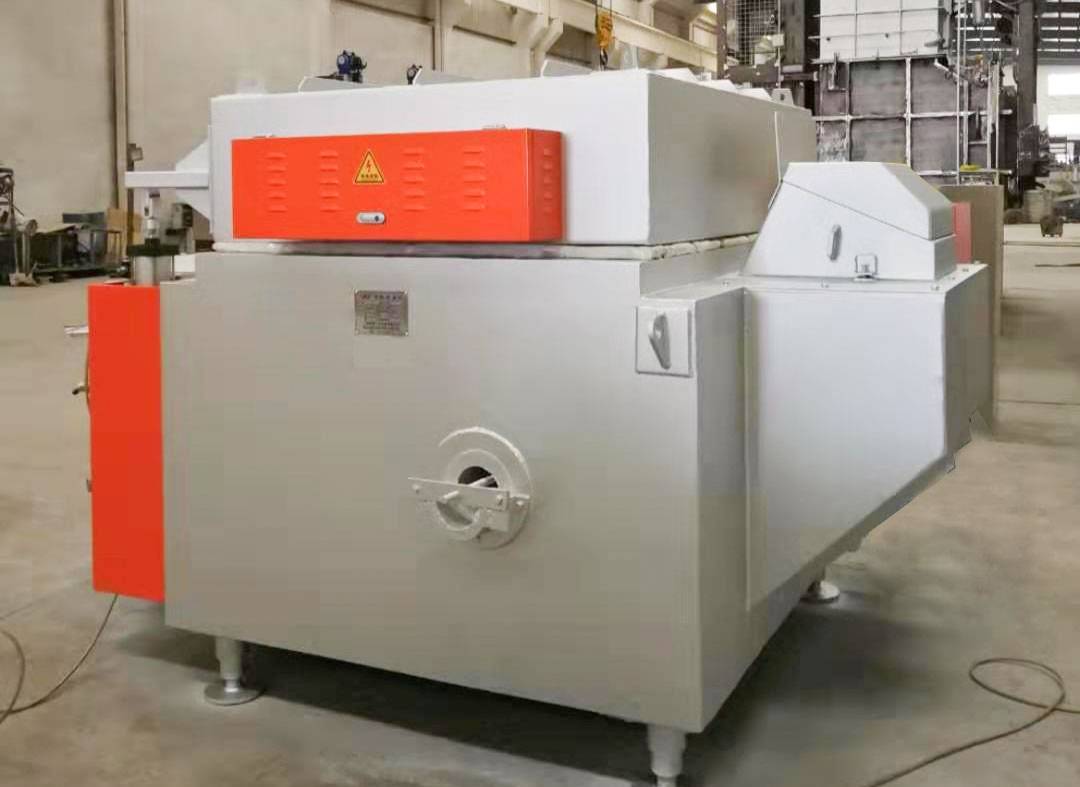
The casting process in foundries involves melting metals such as steel or aluminum and pouring the molten metal into casts. During the die casting process, metal ingots are loaded into a melting and holding furnace. The industrial melting furnace heats the ingots until they are molten, which is then poured into a cast to create the desired part. The cast is subsequently cooled, and may undergo additional heat treatment processes in an industrial furnace, such as solution treating, annealing, or hardening, to set the metal’s properties to the required strength and hardness.
This comprehensive approach ensures that die casting furnaces not only meet the high demands of precision manufacturing but also contribute to the overall efficiency and sustainability of the production process.
Aluminum Scrap Melting Furnaces
Features of Aluminum Scrap Melting Furnaces
Aluminum scrap melting furnaces are engineered to deliver high efficiency in energy consumption, ensuring that the process of converting scrap aluminum into molten metal is both economical and environmentally friendly. These furnaces are designed to handle various types of aluminum scrap, including alloys and recycled materials, which are critical for maintaining the quality and consistency of the final product.
One of the key features of these furnaces is their ability to manage pollutants effectively. Advanced filtration systems and emission control technologies are integrated into their design to minimize the release of harmful gases and particulates into the atmosphere. This not only complies with environmental regulations but also enhances the overall sustainability of the aluminum recycling process.
Temperature control is another critical aspect of aluminum scrap melting furnaces. These furnaces are equipped with sophisticated temperature regulation systems that ensure precise control over the melting process. This precision is essential for maintaining the integrity of the aluminum alloy composition, which is crucial for the quality of the end product. The ability to maintain accurate temperature control also helps in reducing energy wastage, thereby further enhancing the furnace's efficiency.
Moreover, the structural design of these furnaces plays a significant role in their performance. Commonly available in rectangular or circular forms, these furnaces are constructed to optimize heat transfer, thereby increasing melting capacity and reducing energy consumption. For instance, reverberatory furnaces, which are widely used for aluminum melting, employ direct-fired wall-mounted burners to heat the aluminum. The primary mode of heat transfer in these furnaces is through radiation from refractory brick walls, supplemented by convective heat transfer from the burners. This dual heat transfer mechanism ensures efficient melting of the aluminum, even at large capacities up to 150 tons of molten aluminum.
In summary, aluminum scrap melting furnaces are designed with a focus on energy efficiency, pollution management, and precise temperature control. Their advanced features not only enhance the productivity and quality of the aluminum recycling process but also contribute to environmental sustainability.
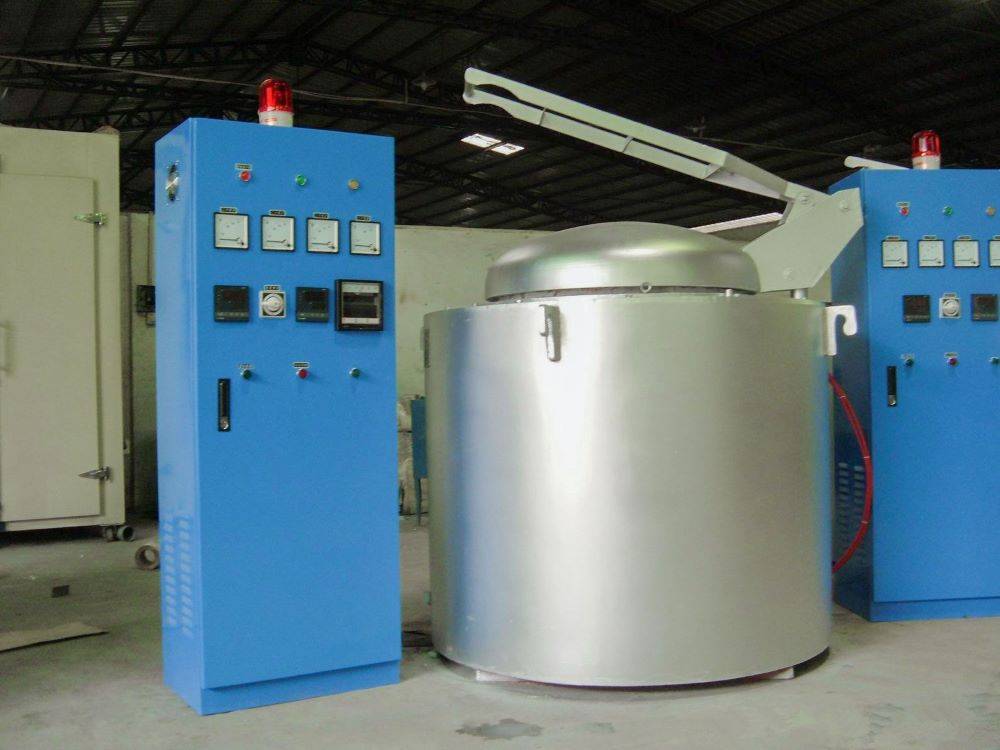
Applications of Aluminum Scrap Melting Furnaces
Aluminum scrap melting furnaces are integral to aluminum recycling facilities, where they transform scrap aluminum into molten metal, which can then be cast into various forms such as ingots, billets, or other shapes. This process not only contributes to environmental sustainability by reducing the need for virgin aluminum but also significantly lowers production costs.
The choice of furnace type—whether reverberatory or rotary—depends on several factors, including the desired production rate, the quality and composition of the scrap aluminum, and the preferred mode of operation (batch or continuous). Reverberatory furnaces, for instance, utilize direct-fired wall-mounted burners to heat the aluminum, primarily through radiation from refractory brick walls, with additional convective heating from the burners. These furnaces can handle up to 150 tons of molten aluminum and offer melting efficiencies ranging from 15% to 39%, which can be enhanced with recuperation systems, albeit at the cost of increased maintenance.
On the other hand, rotary melting furnaces are highly flexible and versatile, making them ideal for recycling all forms of aluminum scrap. These furnaces can rotate using various drive systems—such as friction drive wheels, spur rack/pinion, or chain drives—depending on the specific requirements of the operation. Their design allows for a single, configurable furnace door, which can be arranged vertically, horizontally, or swing-mounted, based on the plant layout. Additionally, rotary furnaces can be equipped with highly efficient fume extraction systems, either fixed directly to the furnace or tilted along with it, ensuring cleaner operations and better environmental compliance.
By leveraging these advanced furnace technologies, aluminum recycling facilities can achieve more efficient and environmentally friendly production processes, further reinforcing the importance of aluminum scrap melting furnaces in modern metal processing.
Crucible Furnaces
Features of Crucible Furnaces
Crucible furnaces are renowned for their compact design, which makes them highly versatile and suitable for various applications, from small-scale jewelry making to large-scale industrial processes. This compact nature allows for easy integration into different workspaces, making them a popular choice for both traditional and modern metalworking operations.
One of the standout features of crucible furnaces is their multi-fuel capability. These furnaces can be powered by a variety of energy sources, including gas, electricity, and even solid fuels. This flexibility ensures that they can be used in diverse settings, from remote workshops to sophisticated industrial facilities. The ability to switch between different fuel types also allows for cost optimization and adaptability to local energy resources.
Precision in melting control is another critical aspect of crucible furnaces. These furnaces are designed to maintain precise temperature control, which is essential for melting metals and alloys with high melting points. The temperature control systems ensure that the materials are heated uniformly, preventing any inconsistencies that could affect the quality of the final product. This level of precision is particularly important in applications like jewelry making and experimental metalworking, where the integrity of the metal is paramount.
In addition to these features, crucible furnaces are also known for their durability. The crucible, which is the heart of the furnace, is typically made from materials like graphite, clay, or silicon carbide that can withstand extreme temperatures. This ensures that the furnace can perform reliably over long periods, making it a cost-effective choice for continuous use in industries such as foundries and laboratories.
Overall, the combination of compact design, multi-fuel capability, and precision melting control makes crucible furnaces a versatile and reliable tool for a wide range of metal processing applications.
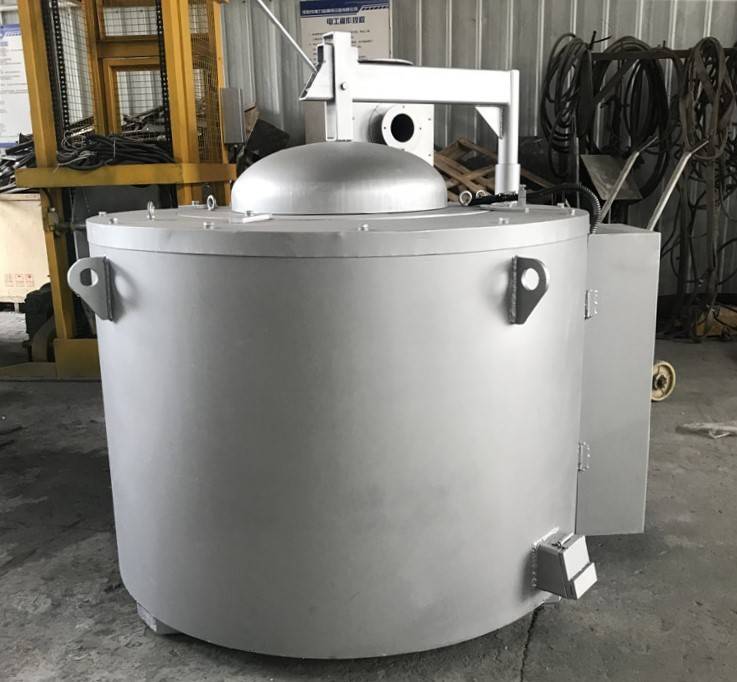
Applications of Crucible Furnaces
Crucible furnaces are versatile tools with a wide range of applications across various industries. They are particularly renowned for their ability to melt a diverse array of metals, including precious metals like gold and silver, ferrous metals such as steel, and non-ferrous alloys like aluminum and copper. This versatility makes them indispensable in sectors where precision and the ability to work with small quantities are paramount.
In the realm of jewelry making, crucible furnaces are essential for melting and casting precious metals. The meticulous control they offer over temperature and the purity of the melt make them ideal for creating intricate and high-quality jewelry pieces. Similarly, in small-scale casting operations, these furnaces provide the necessary precision and flexibility to produce intricate metal parts, making them a favorite among hobbyists and small-scale manufacturers.
Beyond metals, crucible furnaces also find significant applications in glass manufacturing and ceramics production. In glassmaking, they are used for small-scale production of specialty glasses, such as borosilicate glass, which require precise temperature control. In ceramics, these furnaces are employed for firing at high temperatures, ensuring the durability and quality of the final product.
The flexibility of crucible furnaces is further highlighted by their use in experimental metalworking and laboratory settings. Here, their ability to handle small doses of low melting point alloys makes them perfect for research and development activities, where the focus is on testing new materials and processes.
Crucible furnaces come in various designs tailored to different needs. For instance, tilting furnaces allow for precise pouring of the molten metal into molds by tilting the crucible. Bale-out furnaces use a ladle to extract the metal, ensuring minimal exposure to contaminants. Lift-out furnaces remove both the crucible and the metal together, facilitating direct pouring and reducing the risk of temperature fluctuations.
In summary, crucible furnaces are not just limited to metalworking but extend their utility to glass and ceramics industries, making them a cornerstone of small-scale and precision manufacturing processes.
High-Temperature Box-Type Resistance Furnaces
Features of High-Temperature Box-Type Resistance Furnaces
High-temperature box-type resistance furnaces are distinguished by their ability to achieve exceptionally high temperatures, ranging from 1200 to 1800 degrees Celsius. This capability is facilitated by the use of specialized heating elements such as resistance wire, silicon carbide rods, and silicon molybdenum rods, each designed to withstand and efficiently generate these extreme temperatures.
Uniform heating is another critical feature, ensuring that the entire chamber reaches the desired temperature consistently. This uniformity is crucial for processes like materials testing, where precise temperature control is essential to prevent thermal gradients that could affect test results.
Advanced control systems are integral to these furnaces, providing operators with the ability to monitor and adjust temperature settings in real-time. These systems often include programmable logic controllers (PLCs) and digital interfaces, enhancing both the precision and ease of operation. The combination of these features makes high-temperature box-type resistance furnaces indispensable for applications requiring exacting temperature conditions and reliable performance.
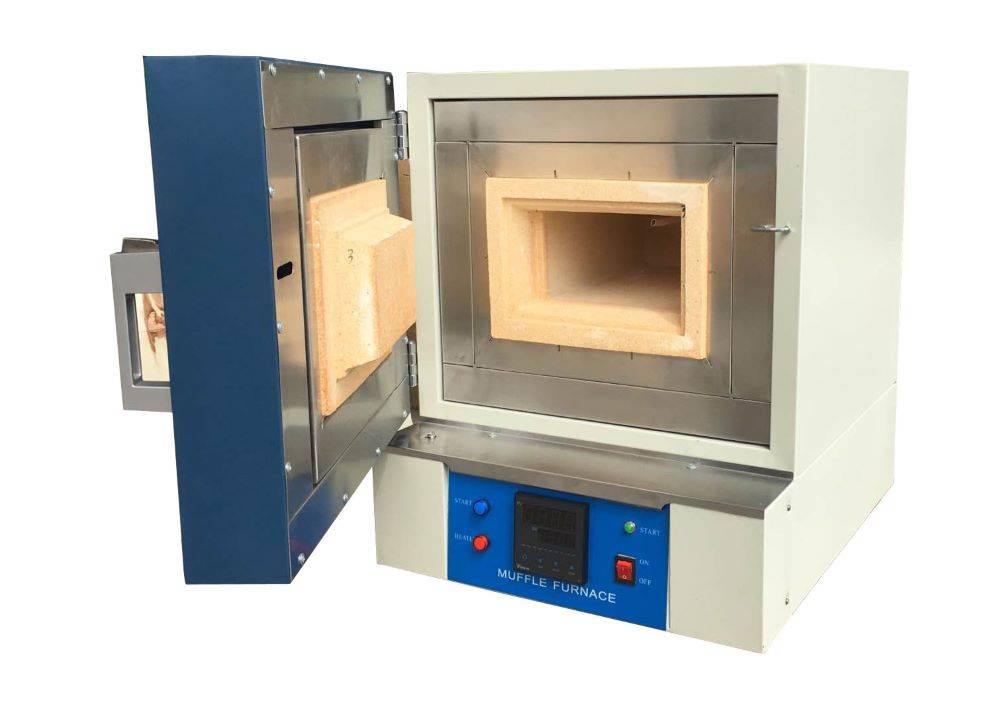
Applications of High-Temperature Box-Type Resistance Furnaces
High-temperature box-type resistance furnaces are versatile tools with a wide array of applications across various industries. These furnaces are particularly known for their ability to achieve and maintain extremely high temperatures, ensuring uniform heating throughout the chamber. This capability makes them indispensable in several critical processes.
One of the primary uses of these furnaces is in materials testing. Researchers and engineers rely on these furnaces to subject materials to extreme conditions, simulating environments that are difficult to replicate outside of a controlled setting. This helps in understanding the behavior and properties of materials under high temperatures, which is crucial for developing new and improved products.
In the realm of advanced ceramics production, these furnaces play a pivotal role. The production of advanced ceramics often requires precise temperature control and uniformity, which high-temperature box-type resistance furnaces excel at providing. This ensures that the final products meet the stringent requirements for durability, strength, and other critical properties.
Semiconductor manufacturing is another area where these furnaces are extensively used. The fabrication of semiconductors involves several high-temperature processes, such as diffusion and oxidation, which require a stable and uniform heating environment. High-temperature box-type resistance furnaces provide the necessary precision and control, ensuring the quality and reliability of semiconductor devices.
Additionally, these furnaces are utilized in thermal treatment processes for metals, such as quenching, annealing, and solid-soluble treatment. These processes are essential for enhancing the hardness, strength, and corrosion resistance of materials. The uniform heating provided by these furnaces ensures that the thermal treatment is effective and consistent across the entire batch.
In powder metallurgy, high-temperature box-type resistance furnaces are used to achieve sintering of metal powders. This process is vital for creating high-performance engineering parts with complex geometries and precise specifications. The ability to control temperature and maintain uniformity is key to the success of this application.
Furthermore, these furnaces are employed in electronic component manufacturing. They are used in the packaging, welding, and reflow processes of electronic components, ensuring that the components are manufactured to the highest standards of quality and reliability.
Lastly, university scientific research benefits from these furnaces for various experiments involving high-temperature processes. Whether it's the graphitization of organic matter or the testing of special materials, these furnaces provide the necessary conditions to conduct thorough and accurate research.
In summary, high-temperature box-type resistance furnaces are integral to a multitude of high-temperature applications, ensuring precision, uniformity, and reliability in each process they support.
Die Casting Gas Furnaces
Features of Die Casting Gas Furnaces
Die casting gas furnaces are renowned for their fuel efficiency, which significantly reduces operational costs and environmental impact. This efficiency is achieved through advanced combustion technologies that optimize fuel usage, ensuring that every unit of fuel is utilized to its maximum potential.
Moreover, these furnaces boast a rapid heating capacity, allowing for swift temperature adjustments and quick cycle times. This feature is crucial in high-volume manufacturing environments where time is a critical factor. The rapid heating capability not only enhances productivity but also ensures that the molten metal remains at the optimal casting temperature, thereby improving the quality of the final product.
Another standout feature is the cleaner fuel combustion process. Modern die casting gas furnaces are equipped with sophisticated emission control systems that minimize harmful by-products such as NOx and SOx. This not only complies with stringent environmental regulations but also contributes to a healthier working environment. The cleaner combustion process also extends the lifespan of the furnace and reduces maintenance requirements, making it a cost-effective choice in the long run.
In summary, the combination of fuel efficiency, rapid heating capacity, and cleaner fuel combustion makes die casting gas furnaces an indispensable tool in the metal processing industry, particularly for applications requiring high-quality, precision components.
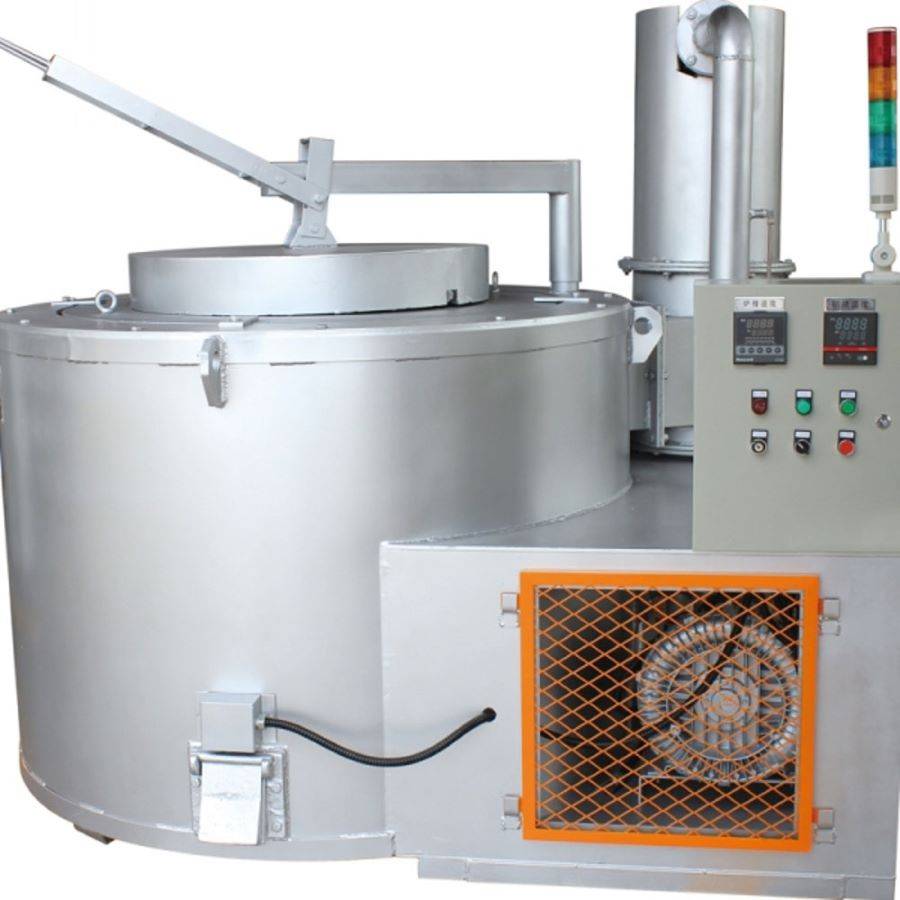
Applications of Die Casting Gas Furnaces
Die casting gas furnaces are indispensable in the production of precision parts, particularly in industries that require high temperatures to melt non-ferrous metals. These furnaces are favored for their efficiency and reduced emissions, making them an environmentally friendly choice in metal processing.
For small to medium-sized operations, such as captive shops casting parts for their own product lines (e.g., fence fittings, ornamental furniture), gas-fired or electric resistance crucible furnaces are the most commonly used. These furnaces are particularly advantageous in jobbing shops where frequent alloy changes are necessary, as crucible furnaces offer the flexibility needed for such operations.
In the die casting process, metal ingots are loaded into a melting and holding furnace. The industrial melting furnace heats the ingots until they become molten metal, which is then poured into a cast to create the desired part. The cast is subsequently cooled, and the part may undergo additional heat treatment processes in an industrial furnace, such as solution treating, annealing, or hardening, to achieve the required strength and hardness.
The versatility of die casting gas furnaces extends to their use in high-pressure die casting, where they can range from crucible furnaces to central reverberatory melting furnaces, low-energy electric or gas-fired holding furnaces, automatic dosing furnaces, and electrically heated distribution systems. This adaptability ensures that die casting gas furnaces can meet the diverse needs of various manufacturing processes, from small-scale operations to large industrial applications.
Related Products
- Mesh belt controlled atmosphere furnace
- Horizontal High Temperature Graphite Vacuum Graphitization Furnace
- Large Vertical Graphite Vacuum Graphitization Furnace
- Vacuum Arc Induction Melting Furnace
- Lab-Scale Vacuum Induction Melting Furnace
Related Articles
- Muffle Furnace: Unraveling the Secrets of Uniform Heating and Controlled Atmosphere
- The Importance of Inert Atmosphere Gases in Furnace Atmospheres
- Comprehensive Guide to Atmosphere Furnaces: Types, Applications, and Benefits
- The Benefits of Controlled Atmosphere Furnaces for Sintering and Annealing Processes
- How Controlled Atmosphere Furnaces Improve Quality and Consistency in Heat Treatment
